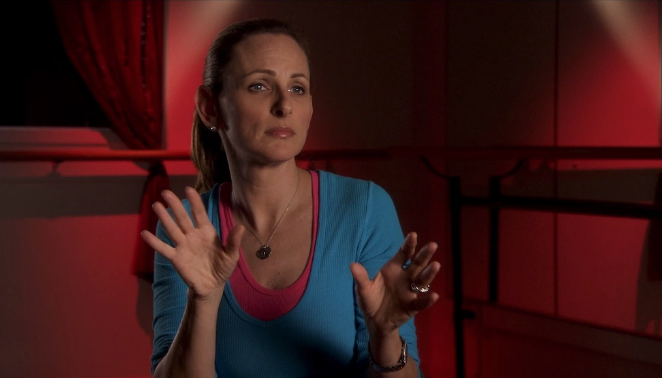The Importance of Awareness, by Bob Connally
26 Oct
“If society got its ideas about people with disabilities from TV,” states disabled actor Robert David Hall (CSI) at the beginning of CinemAbility: The Art of Inclusion, “they would think that basically we’re either pathetic or superpeople.” It really only takes a cursory trip through our movie and TV memory banks to know that Hall is correct about that. Director Jenni Gold’s documentary is a thorough examination of why and how this idea has taken root. She goes back to the earliest depictions of the disabled on screen, beginning with Thomas Edison’s 1897 short, The Fake Beggar.
Through interviews with actors, filmmakers, and film historians (some disabled, some not), Gold’s film offers a variety of insights and perspectives into both the history of the portrayal of the disabled in film and television and the difficulty disabled actors can still have today in simply getting work that doesn’t insult them. Her film doesn’t offer a clear cut answer into the question of whether or not it’s acceptable for able-bodied actors to portray disabled characters. Instead she lets her interviewees offer their answers in an effort to get us to think about it for ourselves.
One of the more fascinating aspects of CinemAbility is how Gold looks at the way so many different disabilities are depicted, from blindness to quadriplegia to cerebral palsy to dwarfism and more. Of course many stereotypical kinds of characters were established as far back as the silent era, such as the “sweet innocent” and the “angry avenger,” and those types have carried on to a certain extent. However, Gold also notes positive examples that are now decades old such as Harold Russell’s casting in 1946’s The Best Years of Our Lives. Russell, a veteran who had lost both of his hands in WWII, was cast as a man who had experienced that same loss in the war. What is noted by CinemAbility however, is that even in a movie that took the step of casting a real disabled veteran who was a non-professional actor, the character is still at times treated “in somewhat of a childlike way.” Russell did not need the assistance of an able-bodied person to dress himself or open a door that had shut but his character in The Best Years of Our Lives did, “to make him appear to be a more sympathetic character perhaps.”
Gold also highlights parallels between the struggles of disabled actors and racial minorities. Daryl “Chill” Mitchell (Galaxy Quest) jokes that after his accident which left him a paraplegic, “I’m black all over again.” Lethal Weapon director Richard Donner is very honest about his reaction to the suggestion that Detective Roger Murtaugh could be played by Danny Glover. “What?” he asked his casting director. “But he’s black. …[B]ecause it wasn’t written on the page, ‘The character is black,’…I didn’t think of Danny Glover and when it came to me it was a shock.” Dumb and Dumber director Peter Farrelly remarks that, while screenplays never suggest that a character is able-bodied and has sight and hearing, “What a casting agent and a director and a producer sees is an able-bodied person. And you’ve gotta get out of that.”
Having a sense of humor about one’s self and disability seems to be crucial in the minds of all of the disabled interviewees. “As long as the joke is laughing with someone, not at someone,” states, writer-actor Tom Sullivan, “you’re okay.” Tropic Thunder is highlighted as a relatively recent movie that fails greatly in walking that line.
What Gold is primarily aiming for is getting the film industry and viewers alike to not assume that able-bodied is the default and to expand their idea of whose stories can be told and who can tell them. While writing a script, William H. Macy admits, “There’s nobody with a disability in my film. I didn’t write one in. I’m in charge. I mean at this point, I can do it. …You know why I didn’t do it? I didn’t think of it. I think that’s what we’ve gotta do. We just have to think of it.”
There are difficulties from within though as remarked upon by actor Danny Murphy (Kingpin). “The disabled community is so fragmented that it’s all over the place… Every little group has its own culture and they’re all looking out for themselves, so none of them really see the big picture.”
CinemAbility: The Art of Inclusion is a film that honestly is thought provoking and challenges viewers. The solution is simple in principle. As Macy puts it, “We just have to think of it.” But changes to the way characters are created and cast will surely move forward only by a couple of degrees at a time, just as change occurs in other areas of life. After watching this movie though, I can’t imagine anyone not having his or her thought process altered. That’s a good place to begin.




No comments yet